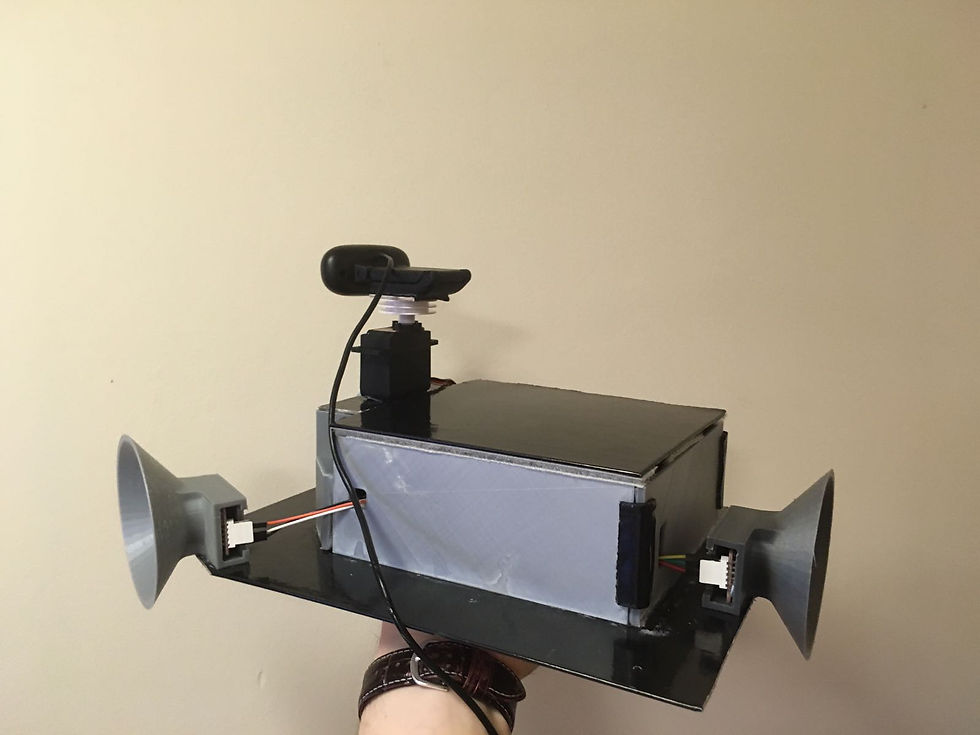Sound Detection




Intensity Driven Sound Localisation
To tackle the potential for wildlife interference during the mission, Team Helios can developed an autonomous Sound detection system to track and record any potential dangers to the robots.
The video shows how the camera turns towards to the wildlife noise with the video feed being displayed on the control centre UI. The system can work up to 2m with loud noises and works well with constant sound sources such as music.
The sound cones were designed in Solidworks and 3D printed to improve the quality of the audio that the sound detectors receive. The ratio of the intensity values that the sound detectors receive is used to tell the camera where to turn to.

All of the electronics for the system are self housed in the unit but the USB camera feeds to the myRIO which sends the video feed back to the control centre via WiFi. The sound detection can continue working if the robot stops.
Capabilities Demonstrated
-
Control Centre Status Updates - The sound detection system provides the control centre with a constant video feed of the loudest sound in the environment, with the priority of identifying any potential threats such as wildlife. The video feed is also saved for later viewing if necessary.
-
Autonomous Servo Control - The audio output from the sound detectors is filtered to determine intensity values for the sound. The intensity values from the three sound detectors is used as a ratio to give the camera servo an angle to turn to. No user input is required to tell the camera where to face. This system is autonomy level 6.
-
Careful Handling - The 3D printed sound cones help to improve the quality and intensity of the audio that is read by the sound detectors. The effective range is improved by these cones as well as reducing the effect of any interference.

